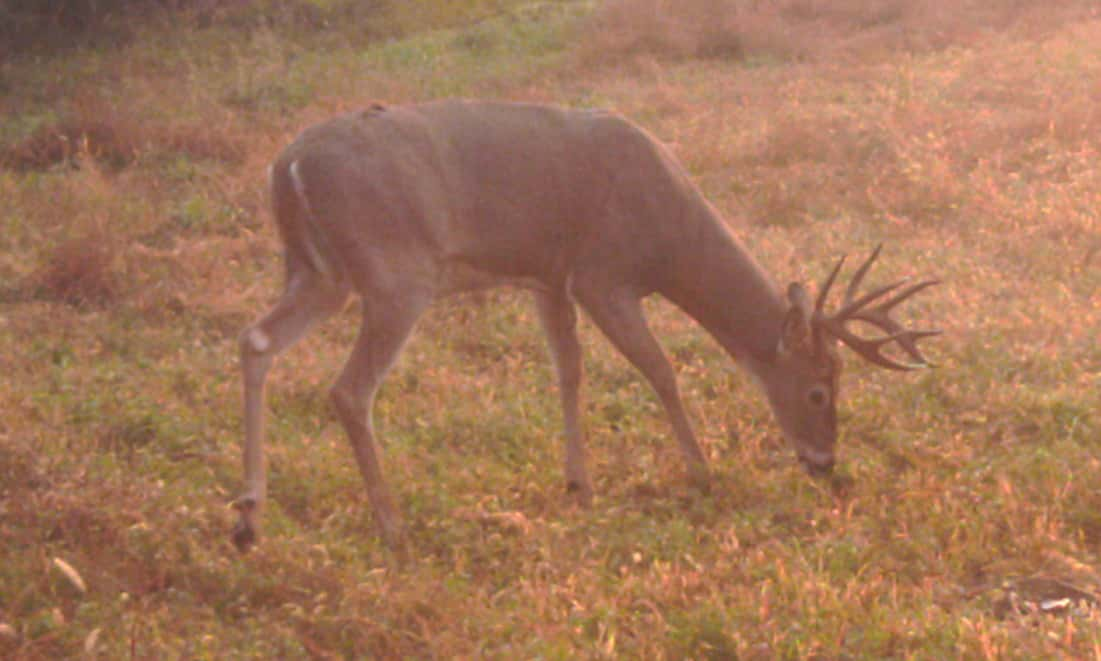
QDMA’s annual survey suggests that hunters are harvesting more mature bucks and letting more younger ones pass than ever before. Simonson Photo
By Nick Simonson
With the issuance of its 2020 Whitetail Report, the Quality Deer Management Association (QDMA) noted among its findings that more deer hunters than at any other time in the group’s surveys are passing on harvesting yearling bucks in favor of mature bucks that are 3.5 years old or older.
In 1989, the initial year surveyed by the organization, yearling bucks comprised more than 60 percent of the annual harvest of deer. In 2018, that percentage dropped to 30 percent of the 2.9 million bucks that were tagged. These annual statistics compiled by the national non-profit organization are evidence of a changing mindset over the last three decades among big game hunters to allow younger deer to mature, and to selectively harvest bigger bucks.
“Those three, four, five and six-year-old bucks, we actually are at a record harvest for those deer reaching those older age classes,” says Kip Adams, Director of Conservation for QDMA, “and hunters are reaping the benefits from a much better balanced age structure deer herd today than at any other point in our nation’s history.”
While some agencies throughout the U.S. have put antler point restrictions in place to protect those yearling bucks and allow them to mature, much of the change in the statistics is hunter driven. Sportsmen understand that having older bucks in the herd provide for a more exciting or challenging hunt for bigger deer and more and more hunters are looking for that out of their annual autumn experience.
Additionally, the growing trend of trail camera use and employing those images to selectively harvest bucks has had some influence on hunter behavior in the field. Despite declining numbers of hunters nationwide, the number of antlered deer harvested throughout the country is at an all-time high in the survey, making the selective nature of the most recent season even more notable.
Adams suggests that opportunities to harvest antlerless deer have helped balance the buck harvest out and serves as another factor that allows hunters to still tag a deer without having to take a young buck. While in the past shooting does was frowned upon and considered almost taboo as populations struggled to rebound from overharvest in certain regions, that mentality has shifted as well.
“Historically, hunters just wanted to protect those antlerless deer at all costs, and this came about at a time when we were recovering deer herds,” Adams relates, adding, “well, deer herds have been recovered across the vast majority of whitetail’s range today, so it’s necessary to shoot some antlerless deer each year to keep deer herds from growing out of control or growing beyond what the habitat can support.”
The 2020 Whitetail Report is compiled through the efforts of QDMA staff and biologists surveying state wildlife agencies throughout the U. S. and then assembling and comparing the reports of varied depth and specificity. While some agencies complete aging of submitted samples, other wildlife departments don’t go as deep, and the Whitetail Report reflects that, where possible.
In addition to the data on whitetail deer harvest, the 68-page document details ongoing changes on the hunting landscape, including changing methods of harvest, Chronic Wasting Disease (CWD) and related regulations to limit transmission, propagation of crossbow hunting seasons, and baiting regulations on a state-by-state and region-by-region basis.
“It’s an insane amount of data for sure, but we’re very lucky and we have a very good working relationship with just about every state wildlife agency in the country,” Adams explains, “we are very fortunate to have trained wildlife biologists that can look through this data, can interpret it and then, importantly, we have a great staff of writers who can effectively communicate this to the hunters and the natural resources professionals,” he concludes.
More information on QDMA can be found at QDMA.com, and the 2020 Whitetail Report can be downloaded at: qdma.com/2020-whitetail-report/

